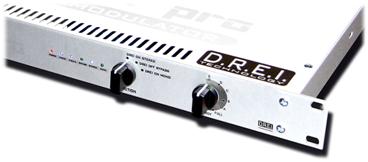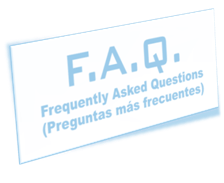|
email: info@neutralaudio.com |
|
What is the Neutral X-DREi?
It is a 100% analog device designed to combat intermodulation, the physical limitations of the speakers and any other factors that should not be in a music signal or amplified. The device is composed of a DREi tech. module and 6 buffers operating in parallel. The goal is to work with as pure a signal as possible and neutralize what is harmful.
What does DREi mean?
Dynamic Reduction of Electronic Interactions. All our devices have at least one of these modules. To function properly DREi uses various dynamically controlled preamps on each input / output channel.
What do I gain by adding one to my systems?
DREi technology very clearly increases the overall performance of the speakers, filters and the amplification and optimizes its power, delivering more volume with the same energy.
As a direct result of this improvement:
· Obtains an equivalent sound to that of more expensive systems. · Crossover is more accurate when working with pure signals. · The relationship between music and "other things" increases, resulting in cleaner sound details. · This causes less damage and less deterioration of the devices. · It particularly stresses the bass sounds making them clearer, more consistent and powerful. · There is a remarkable improvement in headphones and monitors. · Each instrument sounds more individual helping you to optimize the mix. The instruments and voices sound more “present” and the different sound levels can be heard better. · In the recording studio, part of this effect is transmitted to the Master. · and much more. We invite you to discover all its facets.
Does DREi function well in all audio systems?
Yes, its effect is the same. No matter the quality or level, there is always improvement. The greater the complexity of the equipment or music, the better the X-DREi PRO works, much better in the case of multitrack systems. For modest systems it is a great investment. To achieve the quality obtained by simply inserting an X-DREi you would have to pay several times its cost.
In what situations is it more advisable to use it?
No doubt in live concerts and events, there are many elements and tracks that add problems to the audio signals. It is also being used with remarkable results in recording studios, for monitoring and mastering, in discos and night clubs, sound systems, broadcasting, etc.. In fact any place where people work with audio signals.
How to connect to analogue or digital?
Very simple, insert any audio signal through its circuits. DREi gives its best performance at the mixer exit before the crossover and amplification. We always use analogue, no digital. If the entire system is digital you can insert the X-DREi to the mixer as an external processor and divert the final LR mix to this connection. Some crossover devices also permit this insert. Although it may seem that a dual D/A and A/D convertor impair the audio signal, the improvement with X-DREi is much better and offsets this possible loss.
Are there digital processes in this device?
No, the audio signal never leaves the analogue domain.
Why does the volume go up when DREi is connected?
In fact the volume does not increase much, although it seems a lot. It improves the performance of the amplifier and speakers. There seems to be a higher sound level but in reality there is a higher ratio of PURE SOUND in the amplified signal and our ears hear all the sounds more clearly, hence creating an illusion of greater volume at the same input levels.
To check this you can measure the decibels with pink noise and sonometers in hand, (in the red outdoor switch position), and check that the difference is only +-1dB. If you measure the response with electronic equipment it could be up to +-6dB difference but this is not real. The way that the total energy is distributed makes the electronic measurements inaccurate, even more so if single frequencies are being measured. Note that each system is different and the effect can differ from one to another.
Another simple test you can do is to turn up the volume with DREi OFF “bypass” until you hear distortion coming from amplification saturation. Now turn the DREi ON. You will note now that it sounds louder but without distortion (it should distort even more due to the apparent volume increase and does not). This is obvious evidence of the increased performance discussed above. Try to raise the volume even higher, you can probably get more audio level before saturation is reached and without forcing the speakers. The light "clipping" of the PAs may take longer to turn on, and that is very good.
I already have a good sound, is the improvement great enough to make it worth buying?
Without a doubt. This is one of those rare occasions when a new device with new technology is clearly, instantly and undoubtedly noticeable. Not small or subtle, doubtful changes for better or worse. It is very difficult to define, but the fact that a large number of artists and engineers have already built it into their systems is strong evidence that our claims are justified. No one inserts a new device unless it is really worth it. The audio professional is always working for improvement each day, if there is a new and powerful tool in the audio shed you should be using it.
Should I make mixes with or without using the DREi?
With DREi it will help you optimize the mix to levels that you can not even imagine because it will give you a much greater separation of instruments and any slight change in the adjustment of the mixer is more evident. But the first time you try one of these machines you should do it with the DREi off.
The first time you use DREi it is better to connect X-DREi and leave it on “bypass”. Do your mixes as usual and when you think you can not get more performance and are satisfied, switch on your audio input, (a band playing or a recording (best with multitracks) and try several times connecting / disconnecting the X-DREi bypass switch on the front panel. That way you will hear the differences clearly even using a mix put together without using the X-DREi. You may imagine how it will be the next time you use DREi while doing the mix, then it will be better not to use “bypass”.
What are the two switches on the front?
One of the successes of this device is its simplicity. You will need no "master’s degree" to handle it or even a short course. Just insert it, turn it on, and go. The left switch serves to put DREi into “bypass” mode or duplex mode (dual mono) to enhance its effect using two channels for a single entry or the normal DREi stereo mode.
The other switch selects one of 6 Synergy positions. Independently of this adjustment the DREi effect always works 100%. To optimize the audio response of the assembly formed by room + speakers + amplification. In the owner’s manual there is more information but briefly, you can use “D” or “E” for indoor situations to “FULL” for outdoor and live concerts and for mastering (no effects) especially for recording studios. You can change as much as you want and use it in the position you like best in each situation. Also see the next question.
Does it affect the frequencies and my mix?
It depends on your audio system and the SYNERGY switch. In the last position (FULL = off) of this switch, there is no effect on the scene and therefore it does not affect the frequency response at all. Changing positions slightly alters the relationship between the bass and the high frequencies. With a simple frequency the difference can be +-2dB, but is much lower with music that has a more dynamic DREi effect. If you need to, you should not forget that you can easily compensate in your final mix before reaching the DREi. There is a graph in the owner’s manual or click here.
Does it affect the phase or polarity?
Not at all. Proof of this is that ,if you want, you can interchange the LR channels and use them interchangeably, for example in multi-channel systems such as monitors or movie theatres.
What is Pure Sinewave?
This is another of the internal functions of DREi, which is able to reinterpret the types of waves which should not be amplified as they waste unnecessary power sources as they can not be easily reproduced by the speakers. The electromagnetic behavior and physical limitations of the speakers do not let you reproduce a no sinusoidal wave efficiently. DREi corrects these, so no nuances are lost in any of the instruments or even the electronics. Try to imagine a speaker playing a slow square wave and you'll understand this better.
What is the LED CHECK?
This is an automatic function giving added security. If the machine detects an anomaly or the internal power supply fails, it instantly goes into BYPASS, so you will never be left without sound in any event. Remember that turning off the unit also puts it into bypass mode.
How do I use it in a studio?
It should be used in the Synergy FULL but experience tells us that people actually use “A”, it is a matter of the engineer’s taste. You can insert it into each track at the time of recording, (especially for vocals / piano / guitar / strings) in the “FULL” position, then once all the work done, when creating a master it must be inserted again, but now you can use the SYNERGY control you like best, which may depend on the type and complexity of the music. The DREi effect is partly transmitted to the recording and helps create better sound when reproduced.
Why will DREi damage your speakers less?
Because they do more real work with less input, you need less volume input to fill the room and the amplifiers stay cooler. You can do the following to check. When you have a line of subwoofers, no music playing but with everything on except the X-DREi, approach those woofers. Sometimes you will see that the cone is moving, a small tremor that produces no sound but which is wearing it out and damaging it when in use. Now connect the X-DREi and then look at the cones. Normally they will move much less or even not at all, depending on the system. Draw your own conclusions.
You have a question?
Do not hesitate, send an e-mail to info@neutralaudio.com . If of interest the question will be added to this FAQ list. |


|
TECHNOLOGY |
|
DEALERS |
|
NEWS |
|
COMPANY |
|
PROFESSIONAL AUDIO |
|
HOME AUDIO |
|
INIT |
|
AUDIO |

